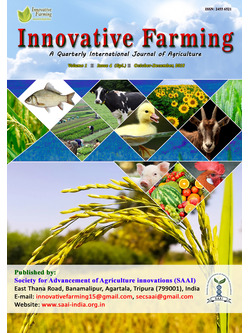
Anti-Nutrition in Legumes: Effect in Human Health and Its Elimination
Narayan Lal*
Dept. of Horticulture, Jawaharlal Nehru Krishi Vishwavidyalaya, Jabalpur, Madhya Pradesh-482004, INDIA
Jayshri Barcchiya
Dept. of Horticulture, Jawaharlal Nehru Krishi Vishwavidyalaya, Jabalpur, Madhya Pradesh-482004, INDIA
Neelesh Raypuriya
Dept. of Entomology, Jawaharlal Nehru Krishi Vishwavidyalaya, Jabalpur, Madhya Pradesh-482004, INDIA
Govind Shiurkar
Dept. of Horticulture, Jawaharlal Nehru Krishi Vishwavidyalaya, Jabalpur, Madhya Pradesh-482004, INDIA
DOI: NIL
Keywords: Legume, Nutrient, Bioactive compound, Phytic acid
Abstract
In India, legume seeds are identified as a major source of protein after milk. Bean (Glycine max, Vigna unguiculata, Phaseolus vulgaris, Vicia faba, Phaseolus lunatus, etc.) seeds have a unique nutritive value as they deliver valuable proteins, saccharides, minerals and vitamins, and dietary fibre. Besides, they contain a wide range of bioactive compounds that cannot be considered as nutrients; however, they exert physiological effects on humans. These may reduce the availability of otherwise good proteins in the diet and cause diseases originating from malnutrition. These factors affecting digestibility include proteolytic inhibitors, phytohemagglutinins, phytic acids, and tannins, etc. These factors are shown to be widely present in leguminous foods, which are important constituents of the diet of a large section of the world's population and particularly people in the developing countries.
Downloads
not found
